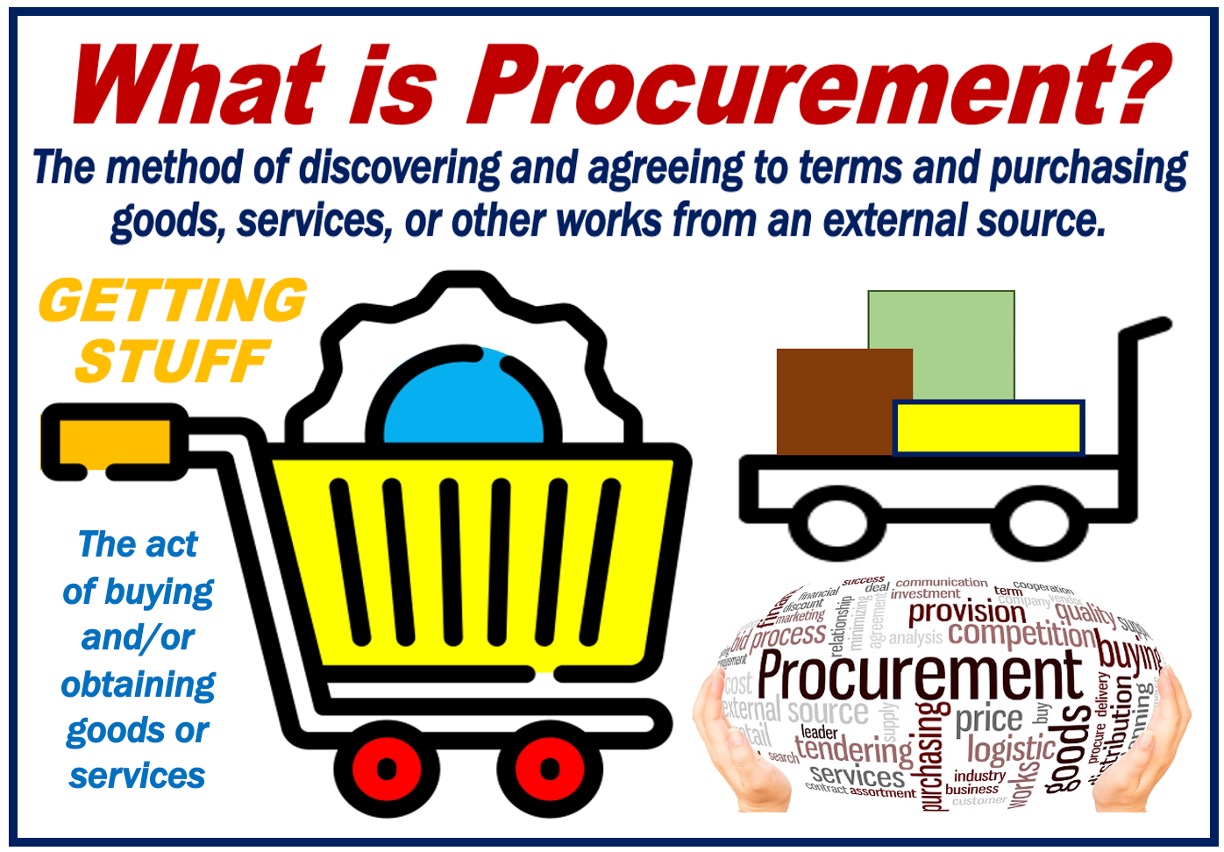In the world of business, having the right supplies, materials, and services is crucial for smooth operations. Procurement is where companies obtain those necessary resources. Procurement is the process of acquiring goods and services from an external source. It can be anything from identifying the need for a product or service to negotiating the terms, selecting the supplier, and finalizing the purchase.
The Cambridge Dictionary has the following definition of the term “procurement,” and an example sentence containing the term:
“The process by which an organization buys the products or services it needs from other organizations. Example Sentence: ‘He vows to cut procurement costs 10% by halving the number of global suppliers.'”
Types of procurement
There are several types of procurement, such as:
-
Direct Procurement
Purchasing supplies, parts, or services that are directly related to the company’s main operations or manufacturing procedures.
-
Indirect Procurement
This is when products and services, such as office supplies, IT equipment, or facility maintenance services are purchased so that they facilitate the organization’s daily operations.

The Procurement Process
The procurement process may vary, depending on the organization, but it usually follows these stages:
-
Needs Identification
The first step is recognizing a need for a particular product, service, or work within the organization.
-
Requirement Definition
The procurement team determines the precise needs, specifications, and required quantities.
-
Suppliers Search
The team searches for potential suppliers who can meet the procurers needs. Requirements usually include quality, cost, delivery time, and reliability.
-
Proposals or Quotation Request
The requirements are communicated to the selected potential suppliers through a request for quotation, request for proposal, or tender process.
-
Supplier Evaluation and Selection
Supplier responses are evaluated based on predetermined criteria, and the one that suits the business the most is selected.
-
Negotiation and Contracting
The procurement team completes the contract by negotiating the terms and conditions with the selected supplier.
-
Order Placement and Delivery
Once the supplier receives the order, the products, services, or works are delivered according to the agreed-upon terms.
-
Monitoring and Payment
The procurement team monitors the delivery process, making sure the supplier adheres to the contract details, and facilitates payment upon satisfactory completion.
Importance
For businesses, efficient procurement is essential for several reasons, including:
-
Cost Savings
By carefully selecting suppliers and negotiating favorable terms, procurement can help organizations minimize costs and achieve better value for money.
During the procurement process, possible risks like suppliers’ non-compliance or supply chain disruptions are evaluated and mitigation strategies are put into place.
The procurement team makes sure that the goods, services, or works obtained meet the required quality standards and specifications.
-
Relationships with Suppliers
They establish and sustain strong relationships with suppliers by cultivating openness, confidence, and trust.
-
Compliance
To maintain ethical and legal standards, procurement procedures must comply with all applicable laws, rules, and corporate policies.
Challenges
Below are some of the challenges that procurement professionals may have to overcome:
-
Supply Chain Disruptions
Global events, natural disasters, or supplier issues can disrupt the flow of goods and services. Companies are more likely to overcome them if they have effective risk management strategies.
-
Regulatory compliance
Procurement activities must adhere to rules and regulations, including industry-specific guidelines, data privacy laws, and anti-corruption laws.
-
Supplier Management
Supplier management involves maintaining a close connection with suppliers, keeping an eye on their output, and quickly solving any problems or questions.
Written by Nicolas Perez Diaz
